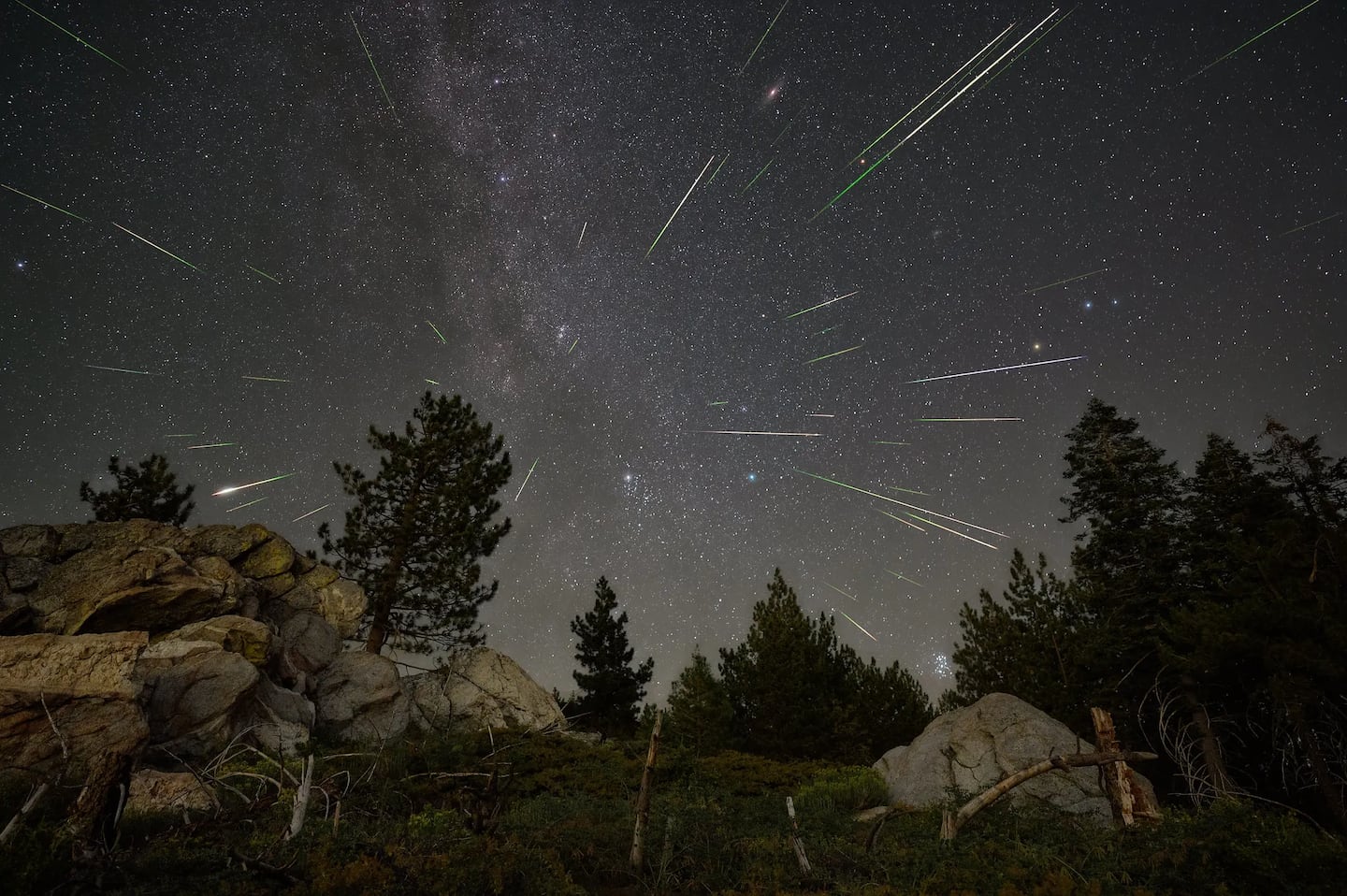
The Perseid meteor shower peaks soon, but now’s the time to catch the dazzling display. Here’s why.
How did your country report this? Share your view in the comments.
Diverging Reports Breakdown
Perseids show: When to see the best meteor shower in August
Meteor showers like the Perseids often gradually increase in intensity and then peak, before rapidly falling off. The Perseids will peak in the early mornings of Aug. 11 and 12. The meteors are coming off the tail of the Comet109P/Swift-Tuttle, which orbits around the sun every 133 years. Pieces of the dust and debris in the tail end up burning up in our atmosphere, and this is why we see those telltale shooting stars. The most active time for the Perseid meteor shower is typically in the few hours before dawn, so if you’re an early riser, that’s the best window. The Aquariids are best seen in the Southern Hemisphere, but we can get a couple of meteors in the southern part of the sky. The particles themselves are very small, similar to a grain of sand, but because they’ll burn at 133,000 miles per hour, they burn very bright.
Every year, I write about the Perseid meteor shower, one of the best and most reliable astronomical events of the year. One of the reasons why it’s such a great night sky display and natural phenomenon is that it occurs during the summer. The Geminids might have the Perseids beat, but that meteor show occurs in mid-December . At that point in the year, it’s cold and often cloudy, so many folks tend to miss it.
This year, the Perseids will peak in the early mornings of Aug. 11 and 12, but there’s a problem. Assuming that the weather cooperates, we still have the moon to contend with this year.
Advertisement
The good news is that the Perseid meteor shower tends to be bright, but you’ve got to block out that moonlight with a building or something. If you’re in an open location, you could also figure out a way to block the moonlight by bringing something, but holding your hand up to the moon for an extended amount of time might get a little tough.
There are actually two other active meteor showers occurring right now, according to the American Meteor Society. They are the Southern Delta Aquariids and the Alpha Capricornids, both fainter than the Perseids, yet it’s still possible to catch a glimpse. The Aquariids are best seen in the Southern Hemisphere, but we can get a couple of meteors in the southern part of the sky.
Advertisement
How do the Perseids form?
The Perseids get their name from the constellation Perseus. If you were to trace the meteors backwards to where they seem to be coming from, it may appear from that constellation. The reality is that those stars are light years away and are not connected to the meteor shower itself.
In reality, the meteors are coming off the tail of the Comet109P/Swift-Tuttle, which orbits around the sun every 133 years. Pieces of the dust and debris in the tail end up burning up in our atmosphere, and this is why we see those telltale shooting stars. Even though the comet itself takes 133 years to orbit the sun, Earth passes through that debris tail every summer, thus the reason for the annual meteor shower. The particles themselves are very small, similar to a grain of sand, but because they’re moving so quickly at about 133,000 miles per hour, they burn very bright.
When is the best viewing time?
You can catch the meteor shower anytime it’s dark. However, sometimes the meteors that we see in the early evening tend to be low Earth-grazers and may appear to have much longer trajectories. The most active time for the Perseids, which can feature 80 to 100 meteors shooting across the sky each hour, is typically in the few hours before dawn, so if you’re an early riser, that’s the best window.
There is nothing magical about how to view the full beauty of the Perseids. Just find a dark spot, let your eyes adjust and look up. A blanket or comfortable chair makes it easier so your neck doesn’t become stiff while viewing.
Advertisement
Finally, even though we’ll have the full moon and you might be in the city of Boston, several meteors will be bright enough to even shine through city lights, so don’t give up!
Meteors from the Perseid meteor shower burn up in the atmosphere as our own galaxy, the Milky Way, is seen in the clear night sky over the German island of Fehmarn on Aug. 13, 2015. EPA
Have a weather question or maybe a weather topic you’d like us to cover? Let us know at weather@globe.com or contact Weather Editor Marianne Mizera at marianne.mizera@globe.com.
Source: https://www.bostonglobe.com/2025/07/29/metro/perseids-meteor-shower-peak/
